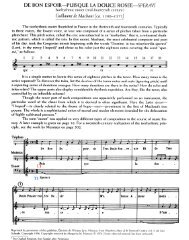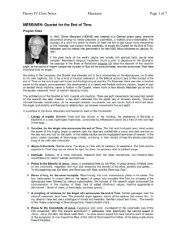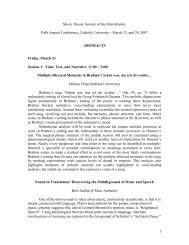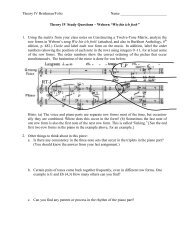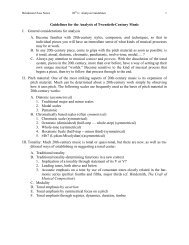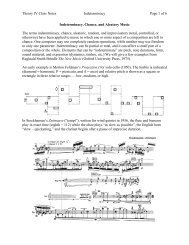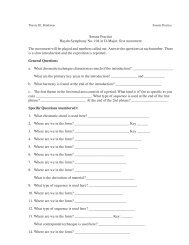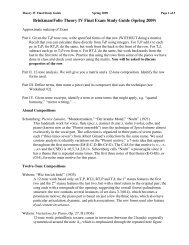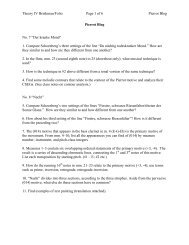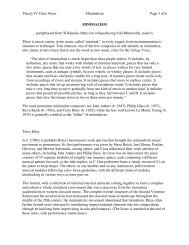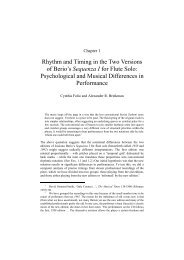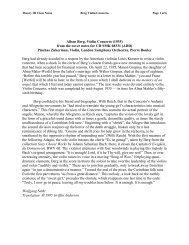HW 9 Webern Piano Variations, Op. 27/2
HW 9 Webern Piano Variations, Op. 27/2
HW 9 Webern Piano Variations, Op. 27/2
You also want an ePaper? Increase the reach of your titles
YUMPU automatically turns print PDFs into web optimized ePapers that Google loves.
Theory IV Brinkman/Folio page 1 of 3 Name ____________________________<br />
Theory IV<br />
Homework #9<br />
<strong>Webern</strong>’s <strong>Piano</strong> <strong>Variations</strong> <strong>Op</strong>. <strong>27</strong>/2<br />
1. Using the instructions from your class notes on Constructing a Twelve-Tone Matrix, make a<br />
matrix for <strong>Webern</strong>’s <strong>Op</strong>. <strong>27</strong> <strong>Piano</strong> <strong>Variations</strong>, second movement (attached, and also in<br />
Burkhart, 6 th edition, p. 485). Use the form on page 2. The prime form of the row is<br />
0 1 9 b 8 a 4 5 6 2 3 7<br />
2. Use your matrix to analyze the row forms in the movement, as we did in the study questions<br />
for Wie bin ich froh! Circle each row form in the music and label the row forms (TnP, TnI,<br />
RTnP, RTnI). Hints:<br />
a. The right and left hands (top and bottom staff, respectively) each use separate row<br />
forms for the most part, but they occasionally cross from one hand to the other (i.e.<br />
the row in the top staff crosses to the bottom staff, and vice versa.<br />
b. As in Wie bin ich froh, row linking is used, i.e., the last note of one row form is also<br />
the first of another. This occurs consistently in this piece.<br />
c. Begin by finding the first row form for the top staff (it crosses to the bottom staff),<br />
then find the first row form for the bottom staff (it crosses to the top staff). [See<br />
diagram below.] WATCH OUT FOR CLEF CHANGES. Remember that the next<br />
row forms begin with the last notes of the previous row forms.<br />
RH:<br />
LH:<br />
3. Certain pitches always occur in pairs, although they occur in different row forms (one note in<br />
each hand). Find as many of these pairs as you can.<br />
4. Three-note chords occur several times in this movement. Name the set class (set name and<br />
prime form) of each instance.<br />
5. What contrapuntal procedure is used in this composition, i.e., what is the relationship of each<br />
hands part to the other?<br />
6. For extra credit: Can you find any consistency in dynamic and/or articulation for any of the<br />
invariant dyads that you found in question 3? Use the back of this sheet or add an extra page.
Theory IV Brinkman/Folio page 2 of 3 Name ____________________________<br />
0 1 9 b 8 a 4 5 6 2 3 7
Theory IV Brinkman/Folio page 3 of 3 Name ____________________________



